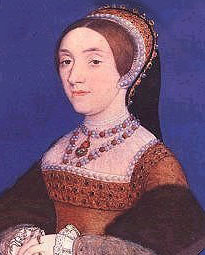
Today, we have a guest article from author and historian Marilyn Roberts who wrote a series of articles on the Howards for us before Christmas. Over to Marilyn…
We last met Agnes, Dowager Duchess of Norfolk and the other prisoners on 13th February 1542, pondering their futures on the day of her step-granddaughter Katherine Howard’s beheading. By the first week in May the old woman had been living in fear of her life in the Tower since mid-December, and had endured a month of interrogation prior to that.
(Poor betrayed Henry VIII, however, had perked up considerably after the First Reading of the Bill of Attainder that would pave the way for the death of Queen Katherine, and by the end of January was actually paying attention to the wife of Sir Thomas Wyatt, who had repudiated her for adultery but had been forced by the King to take her back! Before the end of February the wife of the Duchess’s son, Lord William, and most of the ladies implicated with the late Queen were set free, and by the end of March Henry had been so perfectly charming towards Lady William there was speculation her husband, and even the Duchess of Norfolk herself, would soon be freed.)
The old Dowager was pardoned on 5th May after nearly five months in the Tower, but her son remained incarcerated for another three months. Free she might be, but her life would never be the same again: she had lost her home, and her goods were still to be forfeit and added to the King’s inventory of his money, jewels, plate, tapestries and other valuables then in the process of being recorded. On May 20th Duchess Agnes had some of her former manors restored, but not her beloved Norfolk House, which, in January 1543, was granted to her stepson, the third Duke of Norfolk.
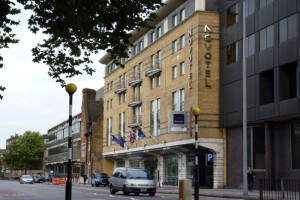
Agnes Tilney, Dowager Duchess of Norfolk, appears to have lived her remaining thousand or so days in relative obscurity in East Anglia, dying in Norfolk in 1545 aged at least 68, a very good age for those times. She was buried on 31st May in Thetford Priory, but on 13th October her remains were removed to the church of St Mary-at-Lambeth, Surrey, as she had directed in her will; sadly nothing remains there to indicate the splendour of the edifice that was once her tomb, or of the tombs of other members of the Howard family. A magnificent book now in the possession of the Dukes of Norfolk shows just how elaborate the funeral brasses were. In 1779 J.C. Brook (Somerset Herald) wrote to a colleague after he had seen the book and the brasses of Agnes and the long-suffering wife of the third Duke,
There are also two other brasses for duchesses of Norfolk at Lambeth, now destroyed; so rich and sumptuous that your Joyce Tiptoft at Enfield [still extant in the 21st century and one of the finest surviving examples of a medieval brass] will appear an orange wench [orange seller] to them. The brasses are done with gold lackered [sic] over in such a manner that they appear exactly like the real metal, and then the lines in black are traced upon it. The book was done by Henry Lilly, Rouge Dragon Pursuivant, who died in 1638.
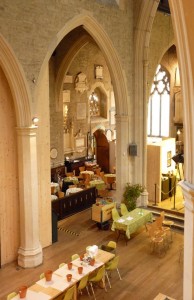
I have seen this marvellous book in the Archives of the present Duke of Norfolk at Arundel Castle, and the images are indeed beautiful to behold. Agnes is depicted as a mature rather than an old woman, wearing a traditional gable hood surmounted by an oversized ducal coronet. Her face is heart-shaped, lips full, eyes large and wide open, but overall the expression is one of weariness. Her neck, which mercifully was spared the axe, is long, and is the neck of woman younger than Agnes’s 68 or so years at time of death. Her long fingers are touching in prayer, and the heraldry surrounding her and etched into her golden robe is a testament to the noble connections within the Howard family. Ancient Mowbray heraldry is present but not prominent. Already by 1633, when the book was being prepared, vandals had struck, for in the perfect and very legible script that accompanies the illustration we are told that in the Howard Chapel,
…is a faire tomb in the middle of the said chappell erected to the memorie of Agnes Duchesse of Norffolke second wife of Thomas the victorious Duke the inscription stolen away the armes on the sides and endes defaced.
This beautiful image of Agnes Tilney will feature in the forthcoming book Trouble in Paradise, possibly on the cover, and the photographs have already been taken and the fee is about to be paid. However, for copyright reasons (© His Grace the Duke of Norfolk) I am not able to reproduce it here, as it would fall outside the conditions of use agreed.
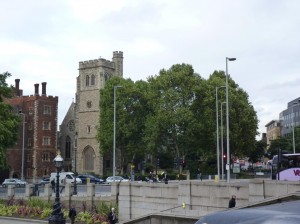
For all its history and royal connections there is precious little readily-available information surviving about what became of Norfolk House itself and one has to dig deep, which is why the research has taken so much longer than anticipated, not helped by the fact that I live some distance from London. I want to finish this article with our thoughts still on the old Duchess and, if Claire is willing, will look at the subsequent life of the house later in the year.
If I have achieved nothing else with these articles on the downfall of Duchess Agnes, I hope to have helped dispel the widespread misconception that Katherine Howard lived at the Archbishop of Canterbury’s Lambeth Palace in her somewhat adventurous youth.
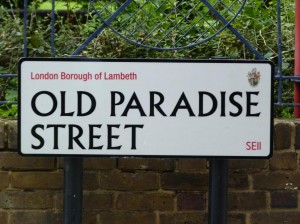
The Queens-Haven Publications website is being redesigned and will feature a section on Marilyn’s forthcoming book Trouble in Paradise: Queen Katherine Howard, the Dowager Duchess and Norfolk House, Lambeth.
www.queens-haven.co.uk
info@queens-haven.co.uk
You can read Marilyn’s previous articles:-
- 470 Years Ago – Terror for the Howards at Christmas
- Katherine Howard’s Execution: The Tragic End of a Young Life
- Katherine Howard, the Duchess and Norfolk House